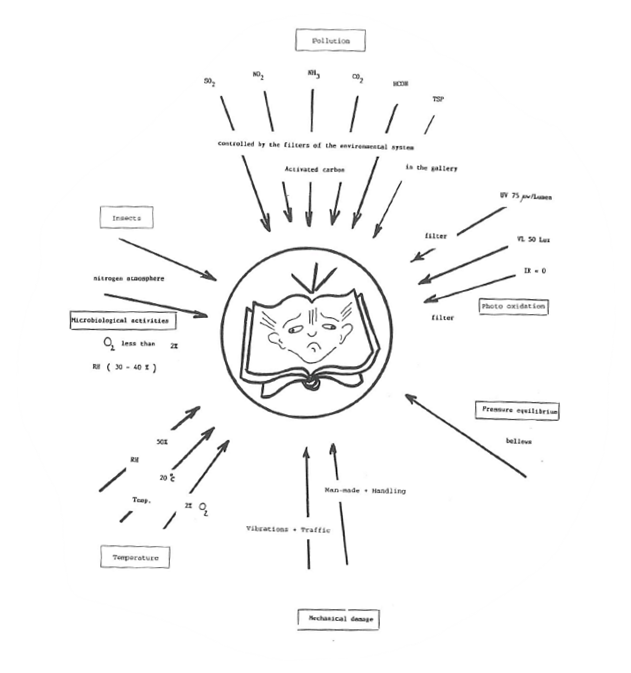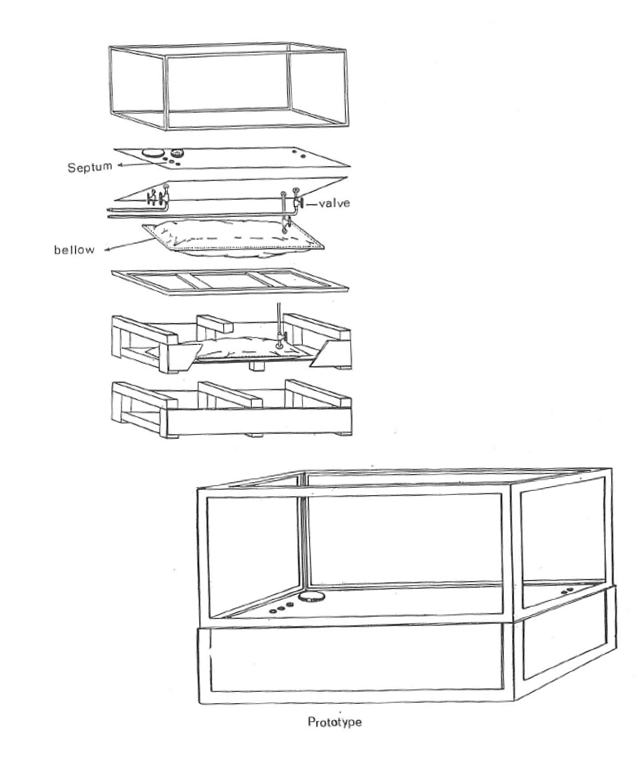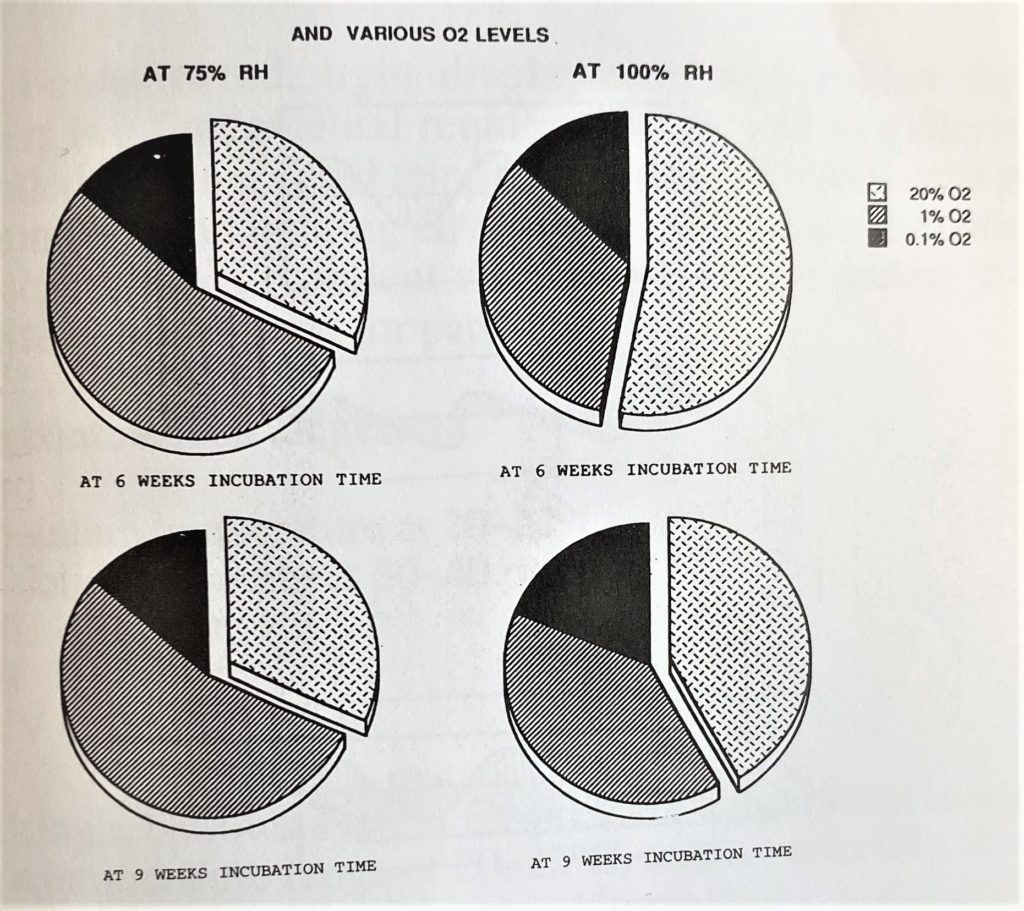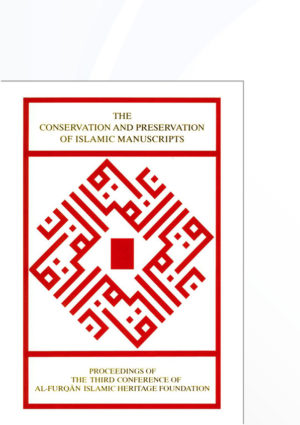Nasry Iskander
| Article contents: Abstract Introduction Discussion and results Conclusion Bibliography |
Abstract
The paper presents the effects on ancient manuscripts of various environmental conditions such as air-pollution, photo-oxidation, insect and microbiological attack, pressure change, vibration, and others.
The paper suggests simple methods of conservation and preservation — those that do not involve chemicals, and that can be used by the resident conservator — as well as other methods that require specialists for more complex treatments involving particularly sensitive objects. The paper includes graphics to more fully illustrate the research.
Introduction
Recently, conservation research has come to focus more on the preservation of objects, rather than their restoration. Restoration may add materials — with undesirable and potentially damaging effects. First, restoration means making changes to the object that cannot improve on its authenticity. Second, the materials used have side-effects.
We must study the micro-environment of storage cases and the display area, and reduce the negative environmental and other effects in to a minimum. Then we must study the general conditions that affect the object, and focus on each of the conditions individually, and in combination. This will facilitate the conservator's treatment decisions.
Discussion and results
We address here five groups of conditions that affect manuscripts, papyri, and parchments, whether on display or in storage (Fig. 1):

ATMOSPIIERIC CONDITIONS, SUCH AS RELATIVE HUMIDITY, TEMPERATURE, AND POLLUTION The paper studied the presence of the following chemicals in the museum air:
- SO2 (sulphates)
- NO2 (nitrates)
- NH3 (ammonia)
- CO2 (carbon dioxide)
- HCOH (formaldehydes)
Air pollution in and around the Egyptian Museum in Cairo — sulphates, nitrates, nitrites, formaldehydes, ammonium NH3 gases — was measured over a period of six months, and in total suspended particles.
The study shows that the indoor atmosphere of the museum is heavily polluted by particulate matter. The maximum concentrations of sulphates were found on the first floor; the maximum concentrations of nitrate and nitrite were detected on the second floor. This suggests that sulphates migrate into the museum from the surrounding environment, but that nitrate may be created inside the building through the chemical reaction of NO2 with alkaline gases.
The higher concentration of the studied gases was detected on the first floor, reflecting the effect of the outside ambient air on the air quality inside the museum. The mean concentration of NO2 and SO2 greatly exceeded standards established for the protection of valuable artifacts. The high levels of such materials adversely affects paper, leather, textiles, rubber, and others (Tables 1 and 2, and Fig. 2).
| Conc. | First Floor | Second Floor | Mean Indoor | Mean Outdoor |
| SO2 | ||||
| Min | 16.0 | 8.3 | 8.3 | 60.0 |
| Max | 21.3 | 9.3 | 21.3 | 190.0 |
| Mean | 18.7 | 8.5 | 13.6 | 130.0 |
| NO2 | ||||
| Min | 58.2 | 30.0 | 30.0 | 95.0 |
| Max | 102.0 | 77.7 | 102.0 | 180.0 |
| Mean | 66.5 | 61.8 | 64.2 | 106.7 |
| NH2 | ||||
| Min | 30.1 | 7.0 | 7.0 | 100.0 |
| Max | 88.9 | 51.0 | 30.1 | 200.0 |
| Mean | 60.0 | 22.1 | 41.1 | 166.7 |
| HCOH | ||||
| Min | 25.0 | 27.0 | 25.0 | 50.0 |
| Max | 288.0 | 150.0 | 288.0 | 250.0 |
| Mean | 122.0 | 29.5 | 74.8 | 100.0 |
| Mean | SD | Max | Min | |
| First floor | 143.7 | 66.6 | 254.6 | 52.6 |
| Second floor | 109.7 | 68.1 | 233.3 | 48.5 |
| Outdoor | 609.9 | 458.3 | 1,764.7 | 136.3 |
Standard for outdoor in USA (Stern, 1986) 80ug/m3
Standard in museum set by (NBS) (Stern, 1986) 75ug/m3

| SO4-- | NO3- | NO2- | NH4+ | |
| Outdoors | 84.5 | 2.5 | 0.2 | |
| First floor | 59.6 | 2.9 | 0.2 | 8 |
| Second floor | 51 | 3.5 | 0.23 | 7.7 |
The problem can be solved simply by using special filters on air-conditioning ducts, and by maintaining constant temperature and humidity levels. Currently, however, only the Mummy Room is air-conditioned.
The air-exchange rates in ventilation systems may be regulated, using suitable filters, according to the volume of visitors. The number of visitors per hour needs to be determined to estimate the volume of fresh air required. From humidity and carbon dioxide it is estimated that we need an air-exchange rate of 8.5 cubic metres per person per hour (pph). By calculating the volume of the galleries and the efficiency of the ventilators, we can estimate the rate of visitor flow.
THE PRESSURE EQUILIBRIUM Maintaining a constant pressure inside and outside display cases is very important. Fluctuations between night and day can lead to display case leakage. The atmosphere outside the cases changes during the day with the presence of visitors. A type of bellows may be installed under display case to regulate the inflow of air in a manner that virtually eliminates the exchange of air to the case (Fig. 3).

The Getty Conservation Institute (GCI) first developed and built a prototype display/storage case in 1989. A modified version was made by N. Iskander in 1994 for the Egyptian Royal Mummy Collection, and for the 4th-century parchment at the Coptic Museum. The modified case made possible the desired control and regulation of atmospheric conditions:
- Oxygen level below two per cent by volume (normal amount in air 21 per cent).
- Nitrogen (or any inert gas) is 100 per cent (practical value 99.8 per cent as start point) (normal amount in air: 78 per Cent).
- Relative humidity from 30-40 per cent (silica gel) or control nitrogen as case is filled.
- Pressure equilibrium by bellows. But this method requires a specialist and monitoring.
A prototype case is shown in Figs. 3 and 4.
INSECT AND MICROBIOLOGICAL ACTIVITY IN MUSEUM ARCHIVES Depending on its fragility or sensitivity, an object subjected to insect attack or microbiological activity may be treated by placing it in a tight, closed display case with a temperature of 20-22°C, and relative humidity of 30-40 per cent, and using silica gel (1kg per cubic metre). See Figs. 5, 6, 7 and 8.




MECHANICAL EFFECTS These include those caused by people in handling, and vibrations from automobile traffic and other sources inside the museum. Traffic and other vibrations are a major threat to objects, which suffer decay that may not be immediately noticeable. The use of rubber under display cases will reduce vibrations. Objects must not be handled, although a study copy of an object may be made. During construction of the Cairo Metro, vibrations were constant. This stopped after we made recommendations on alternative methods of excavating the tunnels.
PHOTO-OXIDATION Light is comprised of three ranges of wave-lengths: ultra-violet (UV), visible range (VR), and infrared (IR). They are all electromagnetic sin waves, according to the wave theory or the particle theory. Their effects are as damaging as hammering, drilling, or dousing the objects (Fig. 9).

A simple screen may be used to filter out the IR rays; a special lamp protects against UV, and dimmers may be used to reduce VR light. The following are the recommended control values according to ICCROM:
VL < 50 Lux (by dimmer);
IR zero (by filter);
UV<75µW/Lumen (by lamp or screen).
Flash cameras must not be used.
Conclusion
A well-constructed, tight display-case with rubber vibration dampers is a fundamental requirement, as well as galleries with controlled lighting, fixed temperature, and activated carbon bags. The humidity and lighting environment should also be controlled. Non-acidic insect repellent should be used for paper. Bio sids material are not needed for parchment.
Recommended ranges:
Maintain temperature at 20-22°C;
Relative humidity at 30-40 per cent;
VL < 50 Lux;
IR zero;
UV < 75µW/Lumen.
Using a bellows system for pressure equilibrium in a gallery with a temperature range of 20-22°C, relative humidity should be maintained at 50-55 per cent. Alternatively, use a prototype display case, requiring a specialist, hermetically sealed, with a constant temperature of 20°C, relative humidity of 30-40 per cent, and oxygen regulated at two per cent. Inert gas — nitrogen is good, easily available, and safe — should be maintained at 78 per cent of the atmospheric mixture (Fig. 10). Activated carbon: , . .

Bibliography
Preusser, Frank, The Getty report (1989) (The prototype case).
The National Centre of Research of Egypt Pollution Report, 1992, on the Egyptian Museum, Alia A. Shakout, el-Taieb, N. M.
Gabra, Gawdat and Iskander, Nasry, "Mesokemischen/Mittelagytischen Dialekt"; in Der Psalter in Oxyrhynchitschen, ISBN 3 927592 11 9, Heidelberg (1995). (The study and conservation of the oldest parchment book in the world from the 4th century.)
"Micro-environment: the Egyptian Museum's Royal Mummy Collection." Ref, 6—A16102", in The Rolex awards for enterprise, ISBN 37169 21041 1, p. 106.
Egyptian Museum Reports and Files.
ICCROM Report (1981) (renovation of the Egyptian Museum).
| Source note: This article was published in the following book: The Conservation and Preservation of Islamic Manuscripts, Proceedings of the third conference of Al-Furqān Islamic Heritage Foundation, 18th-19th November 1995 - English version, 1995, Al-Furqān Islamic Heritage Foundation, London, UK, pp. 119-130. |


